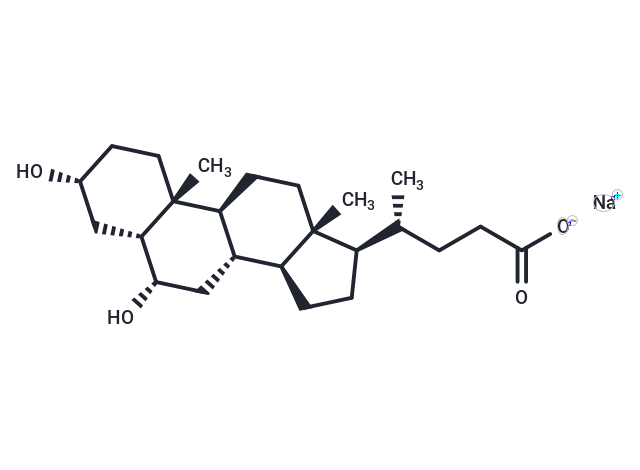Shopping Cart
- Remove All
 Your shopping cart is currently empty
Your shopping cart is currently empty

Hyodeoxycholic acid sodium salt, a natural secondary bile acid, enhances high-density lipoprotein function, reduces farnesoid X receptor antagonist bile acids, and induces potent cytotoxicity, apoptosis, and IL-8 synthesis.

| Pack Size | Price | Availability | Quantity |
|---|---|---|---|
| 100 mg | Inquiry | Backorder | |
| 500 mg | Inquiry | Backorder |
| Description | Hyodeoxycholic acid sodium salt, a natural secondary bile acid, enhances high-density lipoprotein function, reduces farnesoid X receptor antagonist bile acids, and induces potent cytotoxicity, apoptosis, and IL-8 synthesis. |
| Alias | Sodium hyodeoxycholate, HDCA sodium |
| Molecular Weight | 415.56 |
| Formula | C24H40NaO4 |
| Cas No. | 10421-49-5 |
| Relative Density. | no data available |
| Storage | Powder: -20°C for 3 years | In solvent: -80°C for 1 year | Shipping with blue ice. |
| Solubility Information | DMSO: Soluble |

Copyright © 2015-2025 TargetMol Chemicals Inc. All Rights Reserved.